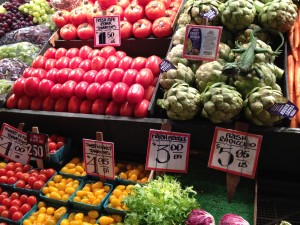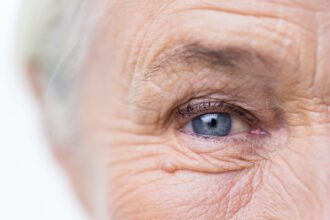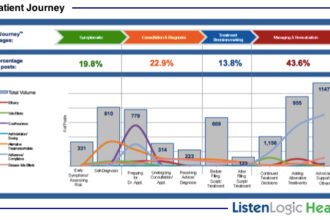Diet Does Not Cure Cancer
 Let’s set the record straight on a silly, popular, and pervasive idea: Food cannot cure you—unless you have a specific deficiency: food cannot cure you of cancer, heart disease, or Alzheimer’s.
Let’s set the record straight on a silly, popular, and pervasive idea: Food cannot cure you—unless you have a specific deficiency: food cannot cure you of cancer, heart disease, or Alzheimer’s.
Diet Does Not Cure Cancer
 Let’s set the record straight on a silly, popular, and pervasive idea: Food cannot cure you—unless you have a specific deficiency: food cannot cure you of cancer, heart disease, or Alzheimer’s. But a proper diet, may delay some disease, or the effects of some disease. It really frosts me when someone states this diet will keep you from getting some disease – at best such is misleading, at worst it can be catastrophic.
Let’s set the record straight on a silly, popular, and pervasive idea: Food cannot cure you—unless you have a specific deficiency: food cannot cure you of cancer, heart disease, or Alzheimer’s. But a proper diet, may delay some disease, or the effects of some disease. It really frosts me when someone states this diet will keep you from getting some disease – at best such is misleading, at worst it can be catastrophic.
Food can kill you, and I see that everyday in my practice – people have an auto-destruct button- it is their mouths. And don’t think you can eat poorly and make up for it with taking supplements. If you eat a balanced diet you do not need to buy supplements, like vitamins, fish oil, calcium, or others. Diets that are rich in these micronutrients may make a difference, the supplements themselves have never been shown to improve health, with the single exception of pregnancy.
Antioxidants are a prime example of false food claims. Every few months someone promotes supplements that contain antioxidants as beneficial to avoiding cancer, heart disease, Alzheimer’s, or macular degeneration of the eye. Scientists have tested to see if antioxidant supplements prevented or improved heart disease or cancer. The use of antioxidants, in study after study, made no difference. In fact, people who took antioxidants, like beta-carotene and vitamin E, didn’t live as long!. But that doesn’t stop some people from promotingsupplements. The sale of antioxidants continues to be pushed by physicians who spend more time in front of the camera than reading medical journals (I’ll call them TV doctors or TV MDs).
Micronutrients: A group of ingredients needed by humans that must come from food. Examples include calcium, iodine, antioxidants, iron, zinc, and vitamins.
Macronutrients: The major ingredients humans consume, including protein, fat, carbohydrate, amino acids, sugars, essential fatty acids, and alcohols.
The latest trend among cookbook authors is to list the macro- and micronutrients in their recipes with vague reference to how this is healthy. For example, you might hear “great for your prostate” or “promotes heart health,” even though science shows the nutrient just doesn’t work that way. While the recipes of those celebrity chefs are tasty, the list of micronutrients they put at the end is little more than word salad.
Even worse is the notion of eating certain foods instead of taking prescribed medicines. If your doctor prescribes a medication to lower your cholesterol, just eating more foods like salmon is NOT the same.
You may enjoy your glass of red wine—but don’t think it will save you from heart disease. To get enough resveratrol, the highly touted antioxidant in red wine, to reap any heart benefit, you would have to drink 2,000 bottles of wine in a day.
There is a long history of pitchmen (charlatans), from Graham (of the cracker) to Kellogg (of the cereal), who sought the fountain of youth through foods, supplements, and colonics. The trend in food promotion today is to highly tout and write about a chemical of the month—from antioxidants to the notion of “superfoods”—which often doesn’t hold up when tested by science.
Did you know:
Corn Flakes and Grape Nuts were once promoted a health food? Kellogg and Post were two competitors in Battle Creek Michigan who invented the cereals and marketed them as health foods.
To illustrate about balanced diets, consider that in the 1500-1700’s many sailors died of scurvy, a disease that caused old wounds to open up, teeth to fall out, and a horrible death. Those sailors who had a balanced diet never got scurvy. It was discovered that scurvy was preventable by eating limes, which is why British sailors are called “limeys”. The ingredient in limes that prevents scurvy is vitamin C. The simple discovery—that a vitamin deficiency causes disease, began the idea that if we could isolate the vitamins and micronutrients we could prevent many other diseases.
But that does not mean a massive amount of vitamin C is better. Linus Pauling, the two-time Nobel Prize winner, believed that high doses of vitamin C would cure the common cold and prevent cancer. When I met Pauling, he was suffering from a cold; a few years later he died of prostate cancer. The more important lesson of vitamin C is this: Sailors who were fed a balanced diet did not suffer from scurvy.
21st Century FOODS:
There are a lot of ways you can get food today. You can get foods from a restaurant that are made for you, you can get convenience food that you just heat in a microwave. There are also foods that have been processed and fortified so the manufacturer can claim you’ll get all your nutrition in a bar or a shake. You can even get your nutrition through an intravenous line (iv). Then there is the old fashioned way of whole foods that you put together and cook. We hope to show you that eating whole foods is simply better than eating fortified or convenience foods.
The disadvantage of whole foods is they have a short shelf life. Think of a ripe peach, it’s shelf life is only a few days. Whole foods are quickly spoiled, can easily get bugs in them, mold, or become rancid. Many foods are processed so they have a longer shelf life. But when humans first started to process foods the processing removed some essential micronutrients, like vitamins- and people who ate a diet rich in process foods developed vitamin deficiencies. Vitamins are now put back into the processed foods– this is called “fortifying” foods. We do this with breads, cereals, juices, and infant formula.
The ability to chemically produce vitamins, and other micronutrients, had an impact in medicine. Putting nutrients into an IV has saved hundreds of thousands of lives. While people can survive on IV nutrition they cannot thrive on IV nutrition. Surgeons learned that it is better for people to eat food, than to get nutrition from an IV. Think of IV nutrition as the ultimate convenience food.
 You’ll see how it is better to be eating those foods that naturally contain nutrients, than to eat food that has been processed and requires fortification with micronutrients. This is the current state of affairs, and probably has to do with our limited knowledge of how certain micronutrients work together, how they absorb in humans, and perhaps there are more micronutrients to discover.
You’ll see how it is better to be eating those foods that naturally contain nutrients, than to eat food that has been processed and requires fortification with micronutrients. This is the current state of affairs, and probably has to do with our limited knowledge of how certain micronutrients work together, how they absorb in humans, and perhaps there are more micronutrients to discover.
While we advocate the use fresh and local foods this is not always possible or reasonable. While Seattle has one of the oldest and best markets at Pike Street, a few miles away in the grocery stores you cannot get the same fresh ingredients. Many inner city folks only have processed foods to deal with. You have a unique advantage by getting and using them- and the advantage is taste and maybe better health (maybe). But if you miss the chance to get those foods, if you miss the chance to go to your local farmer’s market – you are missing out on some amazing local and tasty food.
Definitions:
Processed Foods: Any food that is modified in some way to be eaten
Fortified foods: Foods that have had vitamins and other micronutrients added
Convenience foods: Foods that have been processed and fortified for longer shelf life and pre-cooked or made easy to heat up to serve.
The nutritional information included on many recipes is little more than a wild guess. The cooking process changes the properties and concentrations of the nutrients in the foods, making any type of accurate analysis nearly impossible.
There is less fat and, thus, fewer calories in meat after you cook it. Nutrients also change depending on how you cook the food: frying will be different than baking, which will be different than cooking sous vide.
Just adding up calories of the ingredients of a recipe won’t add up to the calories your body receives. If you cook with olive oil or butter, you won’t get 100 percent of the calories of that oil, only about 10 percent.
Cooking also changes how your body is able to process nutrients. Your body is able to get at more of the nutrients of cooked vegetables, even though the total nutrient count goes down. Cooking meat allows more proteins to be available for your body and also inactivates the animal’s hormones and other bioactive proteins.
Your genetic makeup determines how your body will process the food. One diet will not fit all. Eskimo people can eat large quantities of fat and meat, but Eskimos cannot process simple sugars and carbohydrates the same way as a person of European descent.(15) On such a high fat diet Eskimos have low heart disease, until they have a western diet. Scandinavian people easily process dairy products, but Mediterranean people do not process dairy effectively; dairy products for most Mediterraneans result in flatulence and weight gain. Science is just beginning to understand that our genetics plays a part in how we process certain foods. One diet will not fit all humans; one lifestyle will not fit all humans.
REFERENCES:
(1) Multiple studies showing that dietary supplements don’t reduce cancer risks, and may even increase it. One has to feel sorry for people who take supplements thinking that they are doing something good for their health and yet the evidence is clear, and overwhelming- those who do not take supplements live longer. My concern always is that people eat unbalanced diets and seek to compensate by taking supplements.
J.Nati’l Cancer Instit Pub Med ID 22534785
(2) No association between dietary intake of vitamins, minerals, or fatty acids with colon cancer. Meaning- you can take all of those things and you still will get colon cancer at the same rate as if you didn’t take them. Even in the largest study looking at older men taking a multi-vitamin, while there was some decrease in some cancers – there was no decrease in mortality, death from cancer, or colon-rectal cancer.
Int J Cancer 2012 Pub Med ID 22139959
JAMA 2012
(3) Perhaps one of the most frustrating parts of anti-oxidants is that they work, in some level, in the laboratory with cells. But in clinical trials with people, they do not seem to work. Taking something that works in the lab, even with well worked out mechanisms in vivo, does not mean it works well in people. However, diets that are rich in anti-oxidants do benefit people, but not the supplements containing “anti-oxidants,” or the multi-level marketing programs selling anti-oxidants.
Molecules 2012 Pub Med ID 22418926
(4) Not only is there no evidence that antioxidant supplements prevent disease or ameliorate disease – there is evidence that some supplements increase mortality, especially Beta-carotene and vitamin E.
Cocharane Database Syst Rev 2012 Pub Med ID 22419320
(5)The agent in red wine is called resveratrol, which has been shown some benefit even with cancer. However, it does require higher doses than just a glass of wine. There are two ways of looking at this data – the use of resveratrol in a laboratory clearly has an effect, but to take 2000 bottles of wine to get that effect, makes one wonder if the effect on humans might be lost. Yet there is clearly a positive effect of those who have modest amounts of wine. 2000 bottles- I say, the journey of 2000 bottles of wine starts with a single glass – cheers.
J Diet Suppl 2012 Pub Med ID 22432802
(6)The intake of resveratrol in a dietary supplement doesn’t have any impact on DNA-stability – which is how the higher dose works. It would take about 2000 bottles of wine to get the dose that has an effect.
Mutat Res 2012 Pub Med ID 2298176
(7) Scurvy is a miserable disease that is caused from a deficiency of vitamin C. Clinically sailors would get apathetic, bruise easily, old wounds and scars would open, and swollen legs. In 1740 on one trip around the world the British Navy lost 1400 of the 1900 sailors, most to scurvy. James Lind was a navy surgeon who did experiments in 1747 and found that citrus fruits not only prevented but cured scurvy. Lind’s data was ignored by many, who felt scurvy was caused by the conditions of the life of a sailor. In addition, Lind suggested boiling down the lemons into juice. But when the juice was boiled it destroyed the vitamin C. In 1794 when a 23 week trip to India, lemon juice was used daily and had no outbreak of scurvy made news throughout the British Navy. Among the British sailors in the West Indian colonies, found limes easier, and on that basis American sailors referred to the British Navy as “limeys.” Captain James Cook, on his journey to the Hawaian Islands, found that by providing sourkraut none of his sailors developed scurvy, and for that It wasn’t until 1800, however, that lemons were used routinely in the British Navy.
Nutr Rev 2009 Pub Med ID 19519673
(8) The key of balanced diet discovered after years of unbalanced diets in the 16th and 17th century. Did you ever wonder about Eskimos and scurvy? Very little citrus fruit found in the far north, and yet there is no scurvy among Eskimos. It turns out that they get enough vitamin C through the meats that they eat – especially in the raw meats such as walrus (more about Eskimos and walrus tartar later). To prove that you could avoid scurvy through a balanced diet, even before Vitamin C was synthesized in a laboratory, in 1928 anthropologists lived with the Eskimos and did not contract signs of scurvy. Scurvy was not universal among sailors either – those who had a bit of a balanced diet, didn’t have this disease. While humans do not make vitamin C, and must get this micronutrient from diet, many animals do synthesize their own –and the highest concentrations in the liver of animals, lowest in muscles (typically we eat muscle as our source of protein). So while the Eskimo diet may not appear balanced to many, these people have been able to occupy this biologic niche on a diet primarily on foods that seem high fat. The westernization of the Eskimo diet, has increased obesity and heart disease – those Eskimos moving to the city have higher levels of heart disease, cancers, and obesity. When the traditional foods were examined, they also contained high levels of the micronutrients of Omega-3 Fatty acids, iron, phosphorus, zinc, copper, selenium, niacin, pantothenic acid, riboflavin, and vitamin B12. This has led some to claim that the diet of our ancestors, during the Paleolithic diet, is an ideal diet. In this case, the traditional diet of Eskimos would be high in fats, raw sea food products such as walrus, fish such as Arctic char, and seal oil. Not a diet that would be easy to follow for most in the United States. But remember, besides not having the lifestyle of the average Eskimo, we also do not have their genetic make-up, which makes them unique (see reference 15).
Clin Nutr 1992 Pub Med ID 16840004
Int J Circumpolar Health 2012 Pub Med ID 22818718
(9) Micronutrients were what chemists in the first half of the 20th century were trying to isolate to supplement processed foods. The advantage of the processed foods is portability and stability. The processing of foods allowed humans to travel (bread for the west, and noodles for the Silk Road). But diets rich in some processed foods led to multiple micronutrient deficiencies, so chemists worked to isolate the micronutrients needed and return those nutrients to the processed foods to avoid deficiency. Beriberi is deficiency of vitamin B1 that was discovered when people ate diets high in white rice, but not brown rice.
In 1897, Dr. Christiaan Eijkman, a Dutch physician , demonstrated that beriberi is caused by poor diet, and that feeding unprocessed rice (instead of the white polished variety) to chickens helped to prevent beriberi. The following year, Sir Frederick Hopkins postulated that some foods contained “accessory factors”— necessary for the functions of the human body – we now call these vitamins. In 1901, Christiaan Eijkman in the Netherlands correctly interpreted beriberi as a deficiency syndrome. Eijkman coined the term “vitamin.”
In 1929, Eijkman and Hopkins were awarded the Nobel Prize for Physiology or Medicine for this discovery. Hopkins later showed that margarine was inferior to butter because it didn’t contain vitamin A and D (ultimately margarine was supplemented with A and D, but it continues to be inferior).
These discoveries brought in the golden age of biochemistry with idea that we could isolate all the essential micronutrients, then put them back in processed foods, and led to finding the vitamins that were responsible for xerophthalmia, rickets, pellagra, scurvy, in addition to beriberi. By fortifying foods with these micronutrients led to reduction of widespread micronutrient disease in developing countries.
This worked with breads, cereals, juices, and infant formula. As much as we can get by with the processed foods with replacement of the micronutrients, there is a benefit to eating diets that are naturally rich in the essential ingredients. This may indicates that there are more micronutrients left to discover, as well as how these various ingredients are presented to our body makes a large difference in long-term health (see the next reference).
J Nutr 2012 Pub Med ID 22157539
Langenbecks Arch Surg 2007 Pub Med ID 17221268
(10) Cooking has an impact on what people can absorb and process from foods. The term we use is bioavailability- which is the amount of an ingested nutrient that is absorbed and available for use by the body. Another term we use is bioaccessibility, the amount of a nutrient that you eat that is available for absorption – and that has two components – how much can be released by the food matrix, and digestion. We use to determine the nutrients in a food from a chemists lab. The chemist would break down the food and determine the amount of micronutrients in that food. It turns out that people don’t absorb everything in food, and how you cook it changes how you absorb it. For example, if you take a carrot that is raw, a chemist can tell you how much vitamin A is in it. But that does not mean you will absorb all of that vitamin A. But if you feed the carrot to a person and measure how much vitamin A is in their blood and compare carrots that are cooked with raw carrots, it turns out that you get higher levels of vitamin A in the cooked carrots than in the raw carrots. This is how we know that people get more vitamins out of some cooked vegetables than raw, or how you get more when you cook some in certain oils than with others.
Another example is fructose in fruit. You can measure how much fructose is in banana – about 7 grams. But when you eat the banana only you might absorb less than half of that amount, the rest of the fructose is bound to fiber and isn’t available to be absorbed. In contrast with refined fructose, like a 20 ounce soda, would be the equivalent of eating 10 bananas (over half the fructose in a banana is not absorbed
Front Physiol 2012 Pub Med ID 22934067
Heat and cooking change the texture of beef and nutritional components. You have had the steak that is overcooked and dry, or the moist juicy steak. But heat not only changes the texture of the food – it also changes the macronutrients and micronutrients of the food.
J Agric Food Chem 2006 Pub Med ID 22062402
Throughout these references you will see a common theme: the supplement is not as good as the food. Omega-3 fatty acids are important, but taking fish oil capsules is not the same as eating fish. Think of the same thing with fortified food – it is like taking a supplement with a meal. You can sustain with these foods, but still there is something about whole foods we don’t YET understand.










